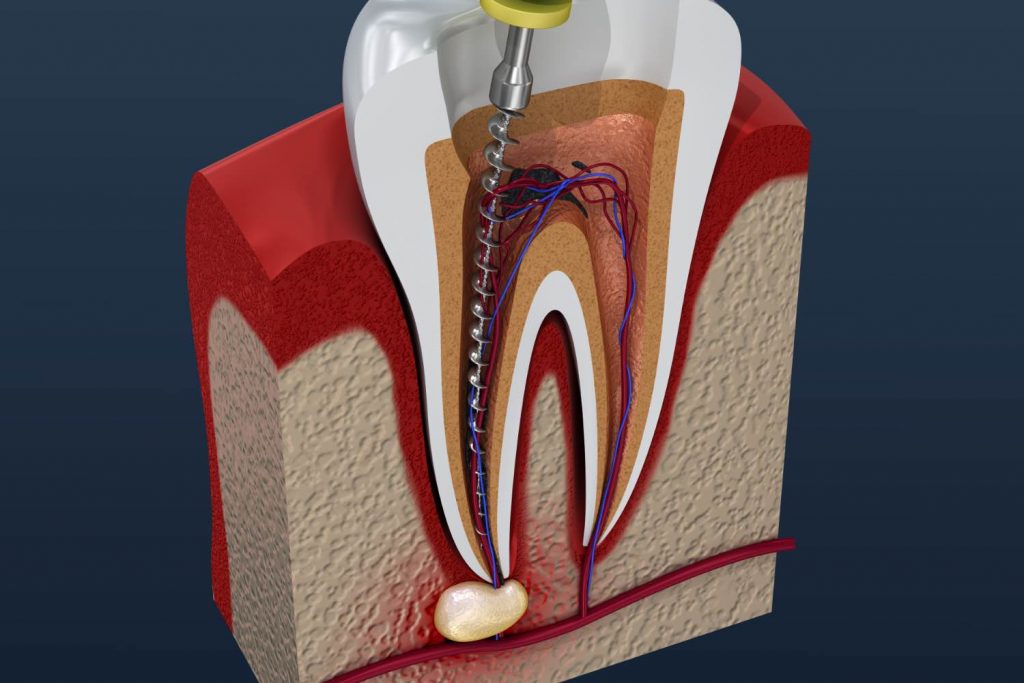
Although no one wants to hear that they need a root canal, this procedure is nothing to fear and benefits your oral health in several ways. In addition to relieving severe pain from a toothache, it also prevents the need to pull a damaged tooth. And, with modern pain management (including both local anesthesia and sedation dentistry), root canals are surprisingly easy. But you may still want to know why you need a root canal in the first place and what you can expect from the procedure. Below, you’ll get the answers to those questions and more!
Why Are Root Canals Necessary?
Your teeth are made of 3 layers. The tough outer layer is called enamel, while the softer middle layer is called dentin. In the center of your tooth is the pulp where the nerve resides. If a tooth has severe damage from a deep cavity, fracture, or other type of trauma, the nerve usually becomes infected.
A dental filling or crown can only repair the outer layers of a tooth, which doesn’t address the infected nerve. If left untreated, this infection can lead to a dangerous abscess and severe pain. A root canal removes the infected nerve and pulp tissue while preserving the outer layers of the tooth. The only other way to treat the infection is extracting the tooth, which is only recommended as a last resort.
How Can You Avoid Root Canals?
When it comes to avoiding root canals and other types of major dental work, prevention is the name of the game. The cleaner you can keep your teeth and gums, the healthier they’ll stay. In addition to brushing twice a day and flossing once, regular cleanings are essential to remove the plaque and tartar you can’t remove at home.
Regular checkups are also a must. These visits allow a dentist to find tooth decay in the early stages and treat it before it reaches the nerve of your tooth and causes an infection.
What Is a Root Canal Procedure Like?
Here are the basic steps of a root canal:
- First, a dentist will make sure you’re completely numb and comfortable.
- Then they’ll make a very small opening in your tooth to access the inner layers and remove the infected tissue.
- Next, they’ll clean out the canals that run through the root of your tooth and fill them with a rubbery material called gutta percha.
- Finally, they’ll seal over the opening in the tooth with tooth-colored material.
Also, keep in mind that a root canal removes a tooth’s blood supply, which can make it brittle and more likely to break over time. To restore the tooth’s strength, a dental crown is usually recommended in the coming weeks or months after a root canal.
It’s natural to feel a little apprehensive when you find out you need a root canal. But not only will it be easier than you expect, it will also maintain your oral health for many years to come.
About the Author
As an award-winning family dentist, Dr. Joanne Bancroft is known for providing top-notch, comfortable dental care. When necessary, she recommends root canals to relieve the pain from a toothache and protect her patients’ long-term oral health. If you’d like to know more about root canals or have any questions, she can be reached by clicking here.
